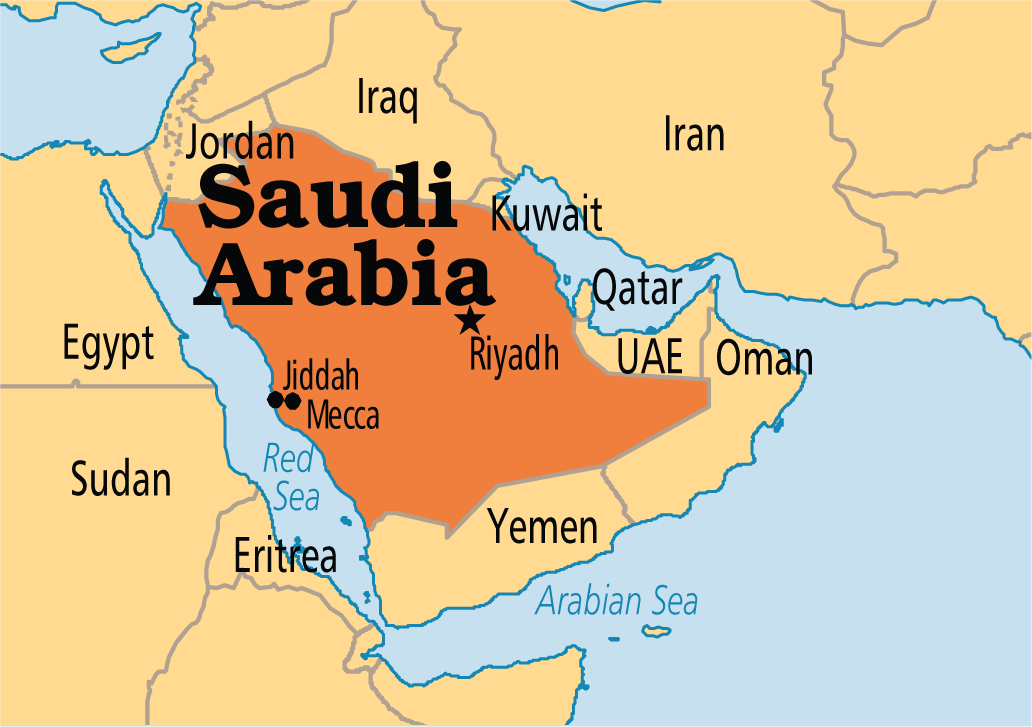Green Initiatives: Saudi Arabia | 28 Apr 2021
Why in News
Recently, Saudi Arabia launched Saudi Green Initiative and the Middle East Green Initiative to combat the threat of climate change.
Key Points
- Background and G20 Summit:
- One of the main pillars of the Saudi G20 presidency was to safeguard the planet.
- In 2020, G20 introduced initiatives like establishing a Global Coral Reef Research and Development Accelerator Platform and the Circular Carbon Economy (CCE) Platform.
- Saudi Arabia reiterated that it is committed to lead regional efforts to address climate change and has been making steady progress in this direction.
- Saudi Arabia established the Environmental Special Forces in 2019.
- One of the main pillars of the Saudi G20 presidency was to safeguard the planet.
- Saudi Green Initiative:
- Aim:
- To raise the vegetation cover, reduce carbon emissions, combat pollution and land degradation, and preserve marine life.
- Features:
- 10 billion trees will be planted in the Kingdom.
- To reduce carbon emissions by more than 4% of global contributions, through a renewable energy programme that will generate 50% of Saudi’s energy from renewables by 2030.
- Saudi Arabia is working towards raising the percentage of its protected areas to more than 30% of its total land area, exceeding the global target of 17%.
- Aim:
- Middle East Green Initiative :
- Aim:
- To preserve marine and coastal environments, increase the proportion of natural reserves and protected land, improve the regulation of oil production, accelerate the transition to clean energy and boost the amount of energy generated by renewables.
- Features:
- Saudi Arabia will work with the Gulf Cooperation Council countries and regional partners to plant an additional 40 billion trees in the West Asian region.
- It represents 5% of the global target of planting one trillion trees and reducing 2.5% of global carbon levels.
- Saudi Arabia will convene an annual summit called the Middle East Green Initiative which will host leaders from the government, scientists and environmentalists to discuss the details of implementation.
- In partnership with participating countries, innovative methods will be researched to irrigate from treated water, cloud seeding and other purpose-driven solutions such as planting native trees which requires support for three years to grow and will then be able to survive on their own with natural irrigation.
- Saudi Arabia will work with the Gulf Cooperation Council countries and regional partners to plant an additional 40 billion trees in the West Asian region.
- Current Support:
- Saudi Arabia has been sharing its expertise and know-how with its neighbouring countries to reduce carbon emissions resulting from hydrocarbon production in the region by 60% and globally by 10%.
- Saudi Arabia currently operates the largest carbon capture and utilisation plant in the world, it also operates one of the region’s most advanced CO2-enhanced oil recovery plants that captures and stores 8,00,000 tonnes of CO2 annually.
- Saudi Arabia has been sharing its expertise and know-how with its neighbouring countries to reduce carbon emissions resulting from hydrocarbon production in the region by 60% and globally by 10%.
- Aim:
- Appreciating Indian Efforts:
- Saudi Arabia also appreciated India’s remarkable commitments to tackle climate change as India is on track to achieve its Paris Agreement targets.
- India’s renewable energy capacity is the fourth largest in the world. India has an ambitious target of achieving 450 gigawatts of renewable energy capacity by 2030.
- Related Indian Initiatives:
Way Forward
- Saudi Arabia hopes that the launch of the two Initiatives marks the beginning of a green era and that these initiatives provide momentum to other countries to unify their efforts to save our planet.
- Economic prosperity cannot be achieved at the cost of the environment. It is critical for us, as an industry, to shift from ‘pollute-first, clean-up later’ attitude and commit to preserving our diminishing natural resources.
- The intent and aspiration to align economic efforts with the environment should not be restricted to the government. Collaboration between the industry, government and regulatory bodies will help in evaluating decisions on economic viability and environmental benefits.

